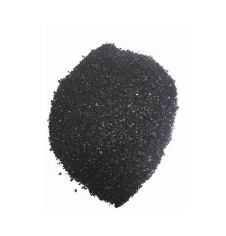Exploring the Rich Hues of Indigo Dye and Its Cultural Significance
The Allure of Indigo Dye A Historical and Cultural Exploration
Indigo dye, known for its deep and captivating blue hue, has a rich history that spans across cultures and centuries. From ancient civilizations to modern fashion runways, indigo has been a significant color that represents not just beauty but also an array of cultural meanings and social contexts.
Historically, the use of indigo dye can be traced back to around 2500 BC in the Indus Valley Civilization, where archaeologists have discovered dyed fabrics that showcase the signature blue color. The dye is extracted from the leaves of the Indigofera plant, a process that requires considerable skill and knowledge. The leaves undergo fermentation, which transforms the green pigment, indican, into the blue dye known as indigo. This intricate process was a closely guarded secret and would often be passed down through generations.
The Allure of Indigo Dye A Historical and Cultural Exploration
Culturally, indigo dye holds significance across various societies. In West Africa, indigo-dyed textiles are integral to ceremonial garments and are often imbued with symbolic meanings. For instance, the Yoruba people of Nigeria use indigo dye to create intricate patterns in their traditional cloth, which is worn during important life events, signifying not only aesthetic appeal but also cultural identity.
indigo dye colour

In Japan, indigo dyeing has a long-standing tradition known as shibori, a technique that involves binding, stitching, or folding the fabric to create unique patterns. The Japanese believe that indigo dye has protective qualities and often use it in garments for children and pregnant women. Moreover, indigo represents a connection to nature and the changing seasons, reflecting the Japanese ethos of harmony with the environment.
In the realm of fashion, indigo has made a striking comeback in recent years. The rise of sustainable fashion has rekindled interest in natural dyes, with many designers favoring indigo for its eco-friendly properties. Unlike synthetic dyes, indigo is less harmful to the environment, making it a popular choice for those keen on reducing their ecological footprint. The versatility of indigo allows it to be used in various materials, from denim to silk, offering a rich palette for creative expression.
Indigo's journey from ancient to contemporary times highlights its enduring appeal. As we navigate a world increasingly focused on sustainability and ethical consumption, the significance of indigo is being reevaluated. Craftsmanship associated with traditional dyeing techniques is gaining renewed appreciation, emphasizing the importance of preserving cultural heritage while adapting to modern aesthetics.
In conclusion, the color indigo transcends mere aesthetics; it is deeply intertwined with history, culture, and the environment. Whether through the traditional techniques used in fabric dyeing or the modern fashion industry’s embrace of sustainability, indigo continues to inspire and evoke emotions. It is a color that tells stories—stories of artistry, exploitation, revival, and hope. As we don our indigo garments or admire indigo-dyed textiles, we partake in a legacy that connects us to artisans of the past, while simultaneously looking forward to a more sustainable future.
-
The Timeless Art of Denim Indigo Dye
NewsJul.01,2025
-
The Rise of Sulfur Dyed Denim
NewsJul.01,2025
-
The Rich Revival of the Best Indigo Dye
NewsJul.01,2025
-
The Enduring Strength of Sulphur Black
NewsJul.01,2025
-
The Ancient Art of Chinese Indigo Dye
NewsJul.01,2025
-
Industry Power of Indigo
NewsJul.01,2025
-
Black Sulfur is Leading the Next Wave
NewsJul.01,2025

Sulphur Black
1.Name: sulphur black; Sulfur Black; Sulphur Black 1;
2.Structure formula:
3.Molecule formula: C6H4N2O5
4.CAS No.: 1326-82-5
5.HS code: 32041911
6.Product specification:Appearance:black phosphorus flakes; black liquid

Bromo Indigo; Vat Bromo-Indigo; C.I.Vat Blue 5
1.Name: Bromo indigo; Vat bromo-indigo; C.I.Vat blue 5;
2.Structure formula:
3.Molecule formula: C16H6Br4N2O2
4.CAS No.: 2475-31-2
5.HS code: 3204151000 6.Major usage and instruction: Be mainly used to dye cotton fabrics.

Indigo Blue Vat Blue
1.Name: indigo blue,vat blue 1,
2.Structure formula:
3.Molecule formula: C16H10N2O2
4.. CAS No.: 482-89-3
5.Molecule weight: 262.62
6.HS code: 3204151000
7.Major usage and instruction: Be mainly used to dye cotton fabrics.

